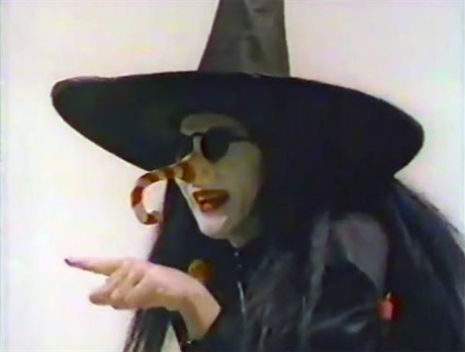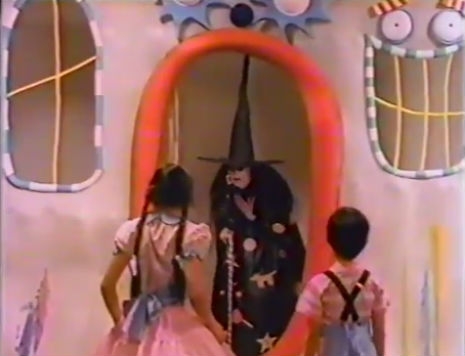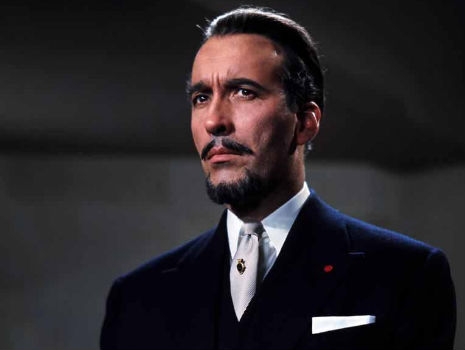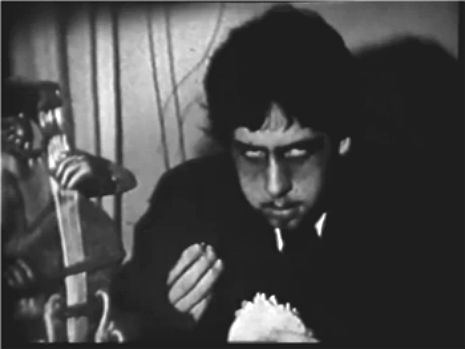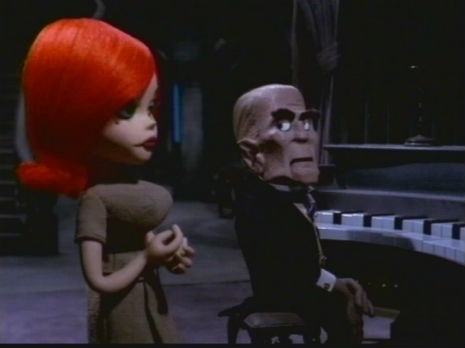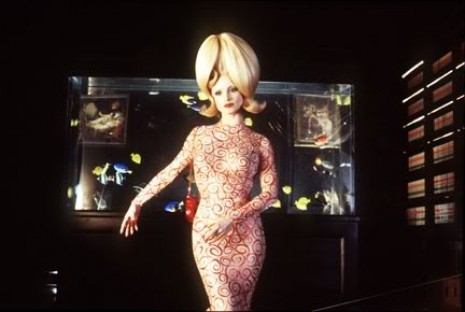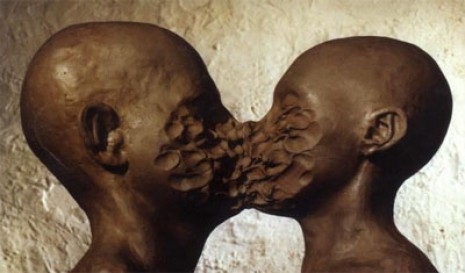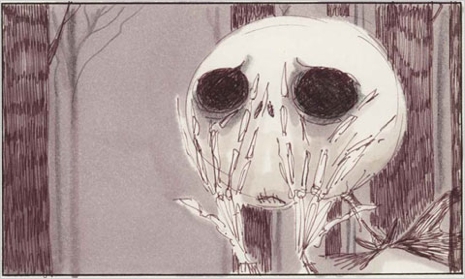
In 1962, an insanely violent trading card series called “Mars Attacks” was painted by the noted pulp novel cover artist Norman Saunders. In sequence, the cards depicted the invasion of Earth (a pretty obvious Cold War allegory) by some just really atrociously violent Martians, who did a lot of shamelessly violent things to our fair planet’s inhabitants both human and animal, and the violent retribution visited upon Mars in violent retaliation.
They were pretty violent.
Even by today’s standards some of these are a little much, but in 1962 parents were freaking the hell out. And children were buying them in droves in response to the parental freakout because somehow parents never figure out how that works. From an informative article on the set’s history on pascard.com:
Cards depicting burning flesh, buxom women and dogs being zapped by aliens are bound to create an uproar, even today. The brainchild of Len Brown and Woody Gelman, this 55-card set conveyed the story of ruthless Martians attacking Earth.
At one point, Topps reportedly made efforts to tone down 13 of the most controversial cards, but after a complaint from a Connecticut district attorney, production was stopped completely. The commotion created by this set must have been somewhat surprising for Brown and Gelman, who previously collaborated on the equally gory 1962 Civil War News set.
Brown wrote the story on the backs of the Mars Attacks cards. Wally Wood and Bob Powell were enlisted to work on the sketches and renowned artist Norman Saunders painted the cards.
So you have some charred soldiers…

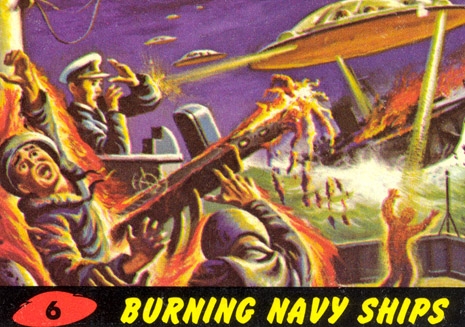
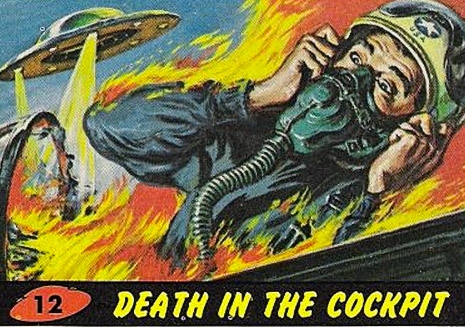
More after the jump…






